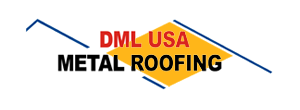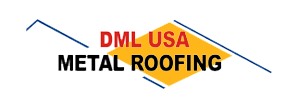Commercial roof installation is a specialized task that directly impacts the watertight integrity of a building. This means ensuring that everything beneath the roof stays dry, clean, and safe from the elements. Here are a few essentials to know:
- Watertight Integrity: Essential for protecting the building’s structure and its contents.
- Variety of Materials: Options include metal roofing solutions that are durable and efficient.
- Environmental Considerations: Choose materials that are not only durable but also eco-friendly.
- Professional Expertise Required: Skilled labor, proper inspection, and quality materials are key for successful installations.
Having built a reputation for excellence, I am Adam Kadziola, an authority in commercial roof installation. Over the years, I’ve leveraged my expertise to ensure buildings are safe, secure, and aesthetically pleasing, meeting the growing demand for eco-friendly and durable roofing solutions seamlessly.

Understanding Commercial Roof Installation
When it comes to commercial roof installation, understanding the types of roofing systems and the installation steps is crucial. Let’s explore the essentials.
Types of Commercial Roofing Systems
- Metal Roofing:
- Metal roofing is a popular choice due to its durability and energy efficiency. It offers a reflective surface that helps reduce energy costs by keeping buildings cooler.
It’s resistant to harsh weather conditions, making it ideal for many commercial settings.
Standing Seam Metal Roof:
- Known for its longevity and resilience, standing seam metal roofs are a type of metal roofing system.
They perform well in various climates and are particularly valued for their ability to withstand extreme weather conditions.
Corrugated Metal Roofing:
- This system combines metal with a corrugated design, enhancing its flexibility and durability.
It’s especially effective in colder climates where temperature fluctuations can affect roofing materials.
Metal Shingles:
- Metal shingles are known for their strength and ability to handle harsh weather conditions.
- They are also resistant to fire, which adds to their appeal for industrial applications.
Installation Steps
- Inspection and Assessment:
- Before any installation begins, a thorough inspection is crucial. This includes checking the existing roof structure and determining if a complete tear-off is necessary.
- A core cut might be performed to assess the layers beneath and ensure no hidden surprises.

- Underlayment:
- The underlayment is the first line of defense against moisture. It provides an additional layer of protection beneath the primary roofing material.
This step is vital in ensuring the roof’s watertight integrity.
Insulation:
- Proper insulation is key to energy efficiency. It helps maintain the building’s internal temperature, reducing heating and cooling costs.
Different materials can be used, depending on the specific needs of the building and climate.
Installation of Roofing Material:
- With metal roofing systems, the material is typically secured using fasteners and clips.
For standing seam metal roofs, the panels are interlocked and fastened to ensure a secure fit.
Ridge Cap:
- The ridge cap is installed at the roof’s peak to provide a finished look and additional protection against leaks.
- It ensures that the edges of the roofing material are sealed from water intrusion.
Each step in the commercial roof installation process requires skilled labor and attention to detail. It’s not just about laying down materials; it’s about ensuring that every layer contributes to the roof’s overall performance and longevity.
By understanding these systems and steps, building owners and contractors can make informed decisions that lead to long-lasting and efficient roofing solutions.
Next, we’ll explore the cost considerations involved in commercial roof installations and the factors that can influence these costs.
Cost Considerations in Commercial Roof Installation
When planning for commercial roof installation, it’s important to understand the various costs involved. Here, we’ll break down the key factors that impact the overall investment.
Factors Affecting Cost
- Installation Cost:
Installation costs can vary widely depending on the complexity of the roof design and the chosen materials. For example, installing a TPO or EPDM system may differ in price due to specific installation techniques and labor requirements.
Coating Cost:
Adding a roof coating is an effective way to extend the lifespan of your roof. Coatings, such as acrylic or silicone, can protect against UV rays and weather damage. While this represents an additional upfront cost, it can save money in the long term by reducing maintenance needs and improving energy efficiency.
Investment in Quality:
Investing in high-quality materials and skilled labor can significantly affect initial costs. However, this investment often pays off with a longer-lasting roof and reduced repair expenses. Consider it a strategic move to ensure durability and performance.
Roof Size:
Larger roofs naturally require more materials and labor, leading to higher costs. It’s essential to measure accurately and account for all areas, including additional structures like vents or skylights.
Material Selection:
- The type of material chosen is a major cost driver. For instance, while metal roofing may have a higher initial cost, it offers benefits like durability and energy efficiency, which can offset the price over time.
Materials like modified asphalt and PVC also have unique cost profiles based on their properties and installation methods.
Labor Expenses:
- Skilled labor is crucial in ensuring a proper installation. Labor costs can vary based on the complexity of the project and the expertise required. Hiring experienced professionals can prevent costly mistakes and rework.

By considering these factors, business owners can develop a comprehensive budget for their roofing project. It’s vital to balance initial expenses with the long-term benefits of a well-installed roof.
Next, we’ll dig into the importance of maintaining your commercial roof and understanding warranties. Stay with us!
Maintenance and Warranties
Importance of Maintenance
Keeping your commercial roof in top condition isn’t just about aesthetics—it’s crucial for preventing problems and extending the roof’s lifespan. Regular inspections are the cornerstone of effective roof maintenance. These should be conducted at least once a year, and more frequently after major weather events like storms.
Why are inspections so important?
Inspections help identify potential issues early, such as small leaks or wear and tear, before they escalate into costly repairs. A professional roofing contractor can pinpoint these problems and suggest necessary repairs, ensuring your roof stays watertight and structurally sound.
Preventative Maintenance
Preventative maintenance is your first line of defense against unexpected damage. This includes cleaning debris, checking for signs of water pooling, and ensuring drainage systems are functioning correctly. These simple actions can prevent leaks and other damage, saving you from expensive fixes down the road.
Understanding Warranties
When you install a new roof, you should receive two main types of warranties: the manufacturer’s warranty and the contractor’s workmanship warranty. The manufacturer’s warranty typically covers defects in the roofing materials, while the contractor’s warranty covers issues related to the installation process. Knowing the specifics of these warranties can help you ensure that any repairs or replacements fall within the covered terms.
Storm and Fire Ratings
A well-maintained roof can better withstand severe weather conditions. Roofs with high storm ratings are designed to handle strong winds and heavy rain, reducing the risk of damage during adverse weather. Similarly, fire-rated roofs can provide extra protection in case of a fire, potentially saving your building from severe damage.
By prioritizing regular maintenance and understanding your warranties, you can protect your investment and ensure your roof provides reliable performance for years to come.
Next, we’ll address some frequently asked questions about commercial roof installation.
Frequently Asked Questions about Commercial Roof Installation
How much does it cost to install a commercial roof?
The cost of commercial roof installation varies widely. It depends on several factors like the size of the roof, the materials chosen, and labor expenses. On average, prices can range from $3.50 to $7.50 per square foot, but complex projects or premium materials can push costs higher. Investing in quality materials and skilled labor can save money in the long run by reducing maintenance and repair costs.
What are the common materials used in commercial roofing?
Commercial roofs use a variety of materials, each with its own benefits:
Metal Roofing: Known for durability and longevity, metal roofing is also fire-resistant and reflects sunlight, which can reduce energy costs.
Single Ply Membrane: This includes TPO and PVC, which are both reflective and resistant to chemicals and oils.
BUR (Built-Up Roofing): Made from multiple layers of roofing felt and asphalt, BUR provides a strong seal and good insulation.
Modified Bitumen Roof: Similar to BUR, but with added synthetic polymers for increased durability in cold temperatures.
Roof Coatings: These extend the life of existing roofs and provide additional protection against UV light and water.
How does commercial roofing differ from residential roofing?
Commercial roofing and residential roofing differ in several key ways:
Materials: Commercial roofs use materials like single-ply membranes, metal, and BUR systems, while residential roofs often use asphalt shingles or tiles.
Size and Complexity: Commercial roofs are generally larger and more complex, often requiring specialized skills and equipment for installation and maintenance.
Skills Required: Commercial roofers need to handle larger-scale projects and work with a wider variety of materials, compared to residential roofers who focus on quicker installations.
By understanding these differences, building owners can make informed decisions about their roofing needs and ensure they choose the right materials and professionals for the job.
Next, we’ll dig into the conclusion, exploring how DML USA Metal Roofing can provide energy-efficient solutions and high resistance to environmental factors.
Conclusion
In commercial roofing, choosing the right materials and experts for the job is crucial. That’s where DML USA Metal Roofing stands out. Based in Illinois, we specialize in manufacturing top-notch metal roofing products that are not only durable but also maintenance-free. Our products are designed to withstand the harshest conditions, providing high resistance to fire, wind, and impact. This makes them an ideal choice for businesses looking to protect their investments.
One of the standout features of our metal roofs is their energy efficiency. By reflecting sunlight, they can significantly reduce cooling costs, leading to potential savings on energy bills. This energy efficiency also means that our roofs may qualify for energy tax credits, offering additional financial benefits to building owners.
Moreover, our metal roofs are engineered to handle extreme weather conditions. With a wind resistance rating of up to 120 mph, they provide peace of mind during storms. Their fire-resistant properties further improve their safety profile, making them a reliable choice for commercial buildings.
For businesses looking to invest in a long-lasting and cost-effective roofing solution, DML USA Metal Roofing offers unparalleled benefits. Our commitment to quality and innovation ensures that your commercial roof installation is not just a necessity but a strategic investment in the future of your building.
To explore our range of products and find how we can meet your commercial roofing needs, visit our products page.

